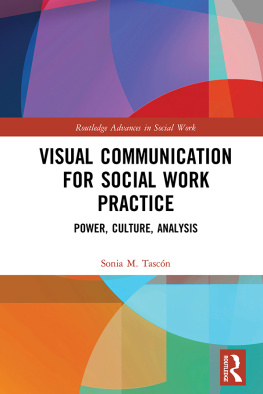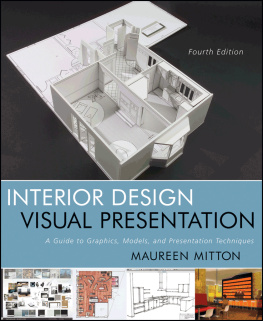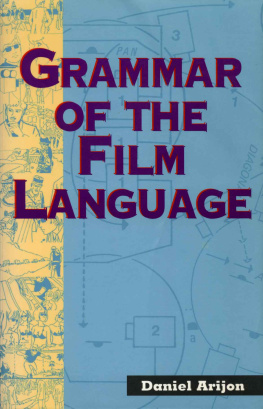Reading Images
This third edition of the landmark textbook Reading Images builds on its reputation as the first systematic and comprehensive account of the grammar of visual design. Drawing on an enormous range of examples from childrens drawings to textbook illustrations, photo-journalism to fine art, as well as three-dimensional forms such as sculpture and toys, the authors examine the ways in which images communicate meaning.
Features of this fully updated third edition include:
new material on diagrams and data visualization
a new approach to the theory of modality
a discussion of how images and their uses have changed since the first edition
examples from a wide range of digital media including websites, social media, smartphone interfaces and computer games
ideas on the future of visual communication.
Reading Images presents a detailed outline of the grammar of visual design and provides the reader with an invaluable tool-kit for reading images in their contemporary multimodal settings. A must for students and scholars of communication, linguistics, design studies, media studies and the arts.
Gunther Kress was Professor of English and Head of the School of Culture, Language and Communication at the UCL Institute of Education, UK. His many ground-breaking publications include Language as Ideology (with Bob Hodge); Social Semiotics (with Bob Hodge); Early Spelling; Learning to Write; Multimodality: A Social Semiotic Approach to Contemporary Communication and Multimodality, Learning and Communication (with Jeff Bezemer).
Theo van Leeuwen is currently Professor of Language and Communication at the University of Southern Denmark and Honorary Professor at the University of New South Wales, Australia. His many influential publications include Multimodal Discourse:The Modes and Media of Contemporary Communication (with Gunther Kress); Speech, Music, Sound; Introducing Social Semiotics and Discourse and Practice: New Tools for Critical Discourse Analysis.
Reading Images
The Grammar of Visual Design
Third edition
Gunther Kress and Theo van Leeuwen

Third edition published 2021
by Routledge
2 Park Square, Milton Park, Abingdon, Oxon, OX14 4RN
and by Routledge
52 Vanderbilt Avenue, New York, NY 10017
Routledge is an imprint of the Taylor & Francis Group, an informa business
2021 Gunther Kress and Theo van Leeuwen
The right of Gunther Kress and Theo van Leeuwen to be identified as authors of this work has been asserted by them in accordance with sections 77 and 78 of the Copyright, Designs and Patents Act 1988.
All rights reserved. No part of this book may be reprinted or reproduced or utilised in any form or by any electronic, mechanical, or other means, now known or hereafter invented, including photocopying and recording, or in any information storage or retrieval system, without permission in writing from the publishers.
Trademark notice: Product or corporate names may be trademarks or registered trademarks, and are used only for identification and explanation without intent to infringe.
First edition published by Routledge 1996
Second edition published by Routledge 2006
British Library Cataloguing-in-Publication Data
A catalogue record for this book is available from the British Library
Library of Congress Cataloging-in-Publication Data
Names: Kress, Gunther R., author. | Van Leeuwen, Theo, 1947 author.
Title: Reading images: the grammar of visual design /
Gunther Kress and Theo van Leeuwen.
Description: Third edition. | London; New York: Routledge, 2020. |
Includes bibliographical references and index.
Identifiers: LCCN 2020022522 | ISBN 9780415672566 (hardback) |
ISBN 9780415672573 (paperback) | ISBN 9781003099857 (ebook)
Subjects: LCSH: Communication in design.
Classification: LCC NK1510 .G76 2020 | DDC 745.4dc23
LC record available at https://lccn.loc.gov/2020022522
ISBN: 978-0-415-67256-6 (hbk)
ISBN: 978-0-415-67257-3 (pbk)
ISBN: 978-1-003-09985-7 (ebk)
Typeset in Univers
by Newgen Publishing UK
In memory of Michael Halliday, whose thinking is evident everywhere in this book.
Contents
While every effort has been made to trace copyright holders, this has not been possible in all cases. Any omissions brought to the publishers attention will be remedied in further editions.
In thinking about a third edition of this book we asked ourselves What might this book be like were we to start writing it today? So much had changed in the nearly 30 years since we had begun our work in this field, in mid-1986. Could we do the usual new edition, integrating some significant changes in our understanding of the field into an otherwise stable foundation of theory?
Despite the deep changes in the social, the technological and hence the semiotic world, which had urged the idea of a new book, we did stay with the idea of a new edition. There were persuasive reasons: the pace of change has not been and is not now equally intense in the three domains of the world involved. Semiotic change necessarily follows on from social change, so that the semiotic resources inevitably lag behind. While superficial aspects of technologies new apps change with enormous speed and frequency, much more so than do the social givens, the fundamental aspects of the grammar of the mode of image as we had set them out in the first two editions of this book have not changed in significant, discernible ways.
What is everywhere evident are deep changes in the use in the reach of the semiotic resource of image and of its categories. The changes in the social and semiotic world have, taken together, produced a major change in the environment in which the image exists. To put it directly, at this point the mode of image (as is the case with every mode) has to be considered in the frame of a social-semiotic world, which is and has to be treated as thoroughly multimodal. So while fundamental categories remain, social and semiotic change has nevertheless brought far-reaching implications: in aspects of theory, reflected, for instance, in a need for new naming. So while things remain familiar in outline and in some detail, yet this part of the semiotic world is profoundly different to what it had been for edition 1 of Reading Images.
With the big decision new book or third edition? out of the way, the questions were relatively straightforward, clustering around what needs to be said, beyond that which is already known?
We can start by pointing to what remains. Our theoretical take continues to be that of social semiotics, with its assumption that meanings are made in social action and interaction, using existing, socially made, semiotic resources that change ceaselessly in their use. We retain the category of mode, together with the principles of modal use in compositions, as multimodal complexes. That realization about stability despite change encouraged us keep the notion of grammar.
We are clear that the visual is one among a number of modes the central resources for making meanings materially evident. Given their specific affordances, meanings are realized differently in each mode. We also stay with the (Hallidayan) assumption (somewhat re-worded) that semiotic resources are as they are because of the functions they fulfil in a given social group.










